HIIT is a training technique that involves short bursts of intense exercise alternated with low-intensity recovery periods. Imagine giving your all in a sprint for 30 seconds and then walking for the next 30. This mix keeps your heart rate up, ensuring you burn more fat in less time.
One of the most appealing aspects of HIIT is its convenience. With bodyweight exercises, you can take your workout anywhere.
Whether you're in a hotel room, at a park, or in the comfort of your living room, HIIT exercises can be done with just your body weight. This convenience means you're more likely to stick with your workout routine, no matter where life takes you.
So, let's explore the top 10 Bodyweight HIIT Blasters that you can do anywhere, anytime. No excuses, just results. Let's get moving!
The 10 Bodyweight HIIT Blasters
1. Jump Squats: A powerful lower body exercise that involves squatting down and then jumping explosively into the air. This move targets the quads, hamstrings, glutes, and calves, enhancing power and strength.
2. Burpees: An intense full-body exercise combining a squat, push-up, and jump into one fluid motion. Burpees improve endurance, strength, and agility, engaging nearly every muscle group.
3. High Knees: A cardio-centric exercise where you run in place, lifting your knees as high as possible. It targets the core, calves, and hip flexors, boosting cardiovascular health and leg strength.
4. Mountain Climbers: A dynamic exercise that simulates climbing motions while in a plank position, rapidly alternating knees towards the chest. This exercise strengthens the core, shoulders, and arms, while also improving agility.
5. Push-ups: A fundamental upper body exercise targeting the chest, shoulders, triceps, and core. Push-ups build upper body strength and core stability through a downward and upward motion.
6. Tricep Dips: This exercise focuses on the triceps by using a bench or chair to lower and lift the body, enhancing arm strength. It's excellent for toning and strengthening the upper arms.
7. Plank Jacks: Starting in a plank position, the legs jump out to the sides and back in, similar to a horizontal jumping jack. Plank jacks strengthen the core, shoulders, and legs, while also providing a cardiovascular challenge.
8. Lunge Jumps: An explosive leg workout that involves jumping from one lunge position into another, switching legs in mid-air. This exercise increases lower body power and improves balance.
9. Sit-ups: A classic core exercise where you lift your upper body from a lying position towards your knees and then lower back down. Sit-ups enhance core strength and endurance.
10. Tuck Jumps: A high-intensity move where you jump up and tuck your knees towards your chest mid-air. Tuck jumps develop explosive power and improve cardiovascular health, engaging the legs and core.
Table of Contents
- The Benefits of Bodyweight HIIT Workouts
- Pre-Workout Considerations
- The Bodyweight HIIT Blasters
- Tips for Maximizing Your HIIT Workout
- Incorporating HIIT into Your Fitness Routine
- Conclusion
The Benefits of Bodyweight HIIT Workouts
Let's delve into the specifics of how these bodyweight workouts can transform your fitness routine and overall health.
Functional Fitness and Flexibility
Functional fitness refers to exercises that improve your ability to perform everyday activities with ease, such as climbing stairs, lifting groceries, or playing with your kids. By mimicking natural movements, bodyweight exercises strengthen the muscles you use daily, enhancing your agility, balance, and coordination.
These exercises often involve a full range of motion, which can significantly improve your flexibility. Movements like lunges, squats, and stretches not only work your muscles but also gently extend your limbs and joints, leading to improved flexibility.
This combination of strength and flexibility reduces your risk of injury in daily life.
Efficiency for Busy Individuals
HIIT workouts can be incredibly short – sometimes just 20 to 30 minutes – and still offer more benefits than slower, longer exercise sessions. This efficiency is a boon for those who want to achieve their fitness goals without spending hours in the gym.
The high-intensity nature of HIIT means you're burning calories not only during your workout but also for hours afterward, thanks to the afterburn effect (also known as excess post-exercise oxygen consumption or EPOC).
This makes HIIT an ideal solution if you are looking to maximize your workout results in minimal time.
Related: Quick and Intense: 15-Minute Home HIIT Workouts for Busy Lives
Versatility and Adaptability for All Fitness Levels
The versatility of bodyweight exercises means that they can be easily modified to increase or decrease intensity, making them accessible to all fitness levels.
Beginners can start with basic versions of exercises and gradually progress to more challenging variations as their strength and endurance improve.
For the more advanced, adding speed, increasing reps, or incorporating explosive movements can provide a challenging workout that pushes limits and fosters growth.
The adaptability of bodyweight exercises ensures that your workouts can evolve with you. As you become fitter, you can easily adjust the intensity to continue challenging your body, ensuring consistent progress and helping to avoid plateaus.
Whether you're looking to improve your overall health, lose weight, or simply fit an effective workout into a hectic schedule, bodyweight HIIT is an approachable, effective, and rewarding choice.
Related: The Benefits of High-Intensity Interval Training (HIIT)
🕒 Time your HIIT sessions early in the morning to jumpstart your metabolism and keep energy levels high throughout the day.
Pre-Workout Considerations
Let's explore some essential pre-workout considerations that can help enhance your performance, prevent injuries, and ensure you get the most out of your bodyweight HIIT workouts.
Warming Up Properly
A proper warm-up is your first step toward a successful and injury-free workout. Warming up gradually revs up your cardiovascular system, increases blood flow to your muscles, and prepares your mind for the upcoming physical challenge. Here are a few tips to warm up effectively:
- Start with Dynamic Stretches: Incorporate movements that mimic the exercises you'll be performing in your workout. Think leg swings, arm circles, and gentle lunges. This helps to prevent muscle strains.
- Include Low-Intensity Cardio: Begin with a few minutes of low-intensity cardio, such as jogging in place or jumping jacks. This increases your heart rate and body temperature, making your muscles more pliable and ready for action.
- Focus on Movement Quality: Take this time to really focus on your form and the quality of your movements. A mindful warm-up sets the tone for your entire workout.
Hydration and Nutrition
Fueling your body correctly is paramount, especially when engaging in high-intensity activities like HIIT. Here's how to keep your nutrition and hydration on point:
- Stay Hydrated: Begin hydrating at least two hours before your workout. Continue to sip water throughout your session to replace fluids lost through sweat. Proper hydration ensures optimal performance and recovery.
- Pre-Workout Nutrition: A small, balanced meal or snack 1-2 hours before your workout can give you the energy you need. Eat a mix of carbohydrates for quick energy and protein for muscle support like a banana with peanut butter or a small smoothie.
- Listen to Your Body: Everyone's digestive system is different, so pay attention to what foods and timing work best for you. Avoid heavy, greasy foods or anything that makes you feel sluggish or uncomfortable.
Related: Fuel Your HIIT: Pre- and Post-Workout Nutrition for Maximum Recovery
Modifying Exercises
Whether you're a beginner or have specific physical limitations, modifying exercises is a smart way to make HIIT work for you. Here's how:
- Reduce Intensity: Start with fewer repetitions or slower movements. Build up your endurance gradually, without pushing yourself to the point of discomfort or pain.
- Use Alternative Movements: If a particular exercise puts too much strain on a part of your body, substitute it with a less intense version or a different exercise that targets the same muscle group but feels more comfortable.
- Listen to Your Body: If something feels wrong or painful during your workouts, stop immediately and adjust. It's better to take it slow and steady than to risk an injury.
Remember, the goal is progress, not perfection. Listen to your body, respect your limits, and gradually push yourself to achieve new fitness milestones.
💧 Stay hydrated! Drink water before, during, and after your workout to fuel performance and aid recovery.
The Bodyweight HIIT Blasters
These bodyweight HIIT exercises are designed to boost your fitness from head to toe, no equipment required. Each exercise focuses on different muscle groups, ensuring a comprehensive workout that improves strength, endurance, and cardiovascular health.
Let's break down these blasters with detailed descriptions and instructions for a successful session.
1. Jump Squats - Power and Lower Body Strength
Targeted Muscles: Quads, hamstrings, glutes, and calves.
Instructions:
- Start in a standing position with feet shoulder-width apart.
- Lower into a squat position, keeping your back straight and chest up.
- Explosively jump up into the air as high as you can.
- Land softly, immediately lowering back into the squat position to complete one rep.
- Repeat for the desired number of repetitions.
2. Burpees - Full-Body Workout and Endurance
Targeted Muscles: Arms, chest, quads, glutes, hamstrings, and core.
Instructions:
- Stand with your feet shoulder-width apart.
- Drop into a squat position and place your hands on the ground.
- Kick your feet back into a push-up position and perform one push-up.
- Quickly return your feet to the squat position.
- Explosively jump into the air, reaching your arms overhead.
- Land and immediately drop back into the squat to begin the next rep.
Related: Burpees 101: Tips, Variations, and Workout Plans for Success
3. High Knees - Cardiovascular Health and Leg Strength
Targeted Muscles: Core, calves, and hip flexors.
Instructions:
- Stand with feet hip-width apart.
- Run in place, lifting your knees as high as possible towards your chest.
- Keep the pace as fast as you can while pumping your arms.
- Continue for the desired time or number of repetitions.
4. Mountain Climbers - Core Stability and Agility
Targeted Muscles: Core, shoulders, and triceps.
Instructions:
- Start in a high plank position with your hands directly under your shoulders.
- Drive one knee towards your chest, then quickly switch, driving the other knee forward.
- Continue alternating legs at a rapid pace, keeping your core tight and back flat.
Related: Mountain Climbers Exercise: Your Key to a Full-Body Workout
5. Push-ups - Upper Body Strength and Core Stability
Targeted Muscles: Chest, shoulders, triceps, and core.
Instructions:
- Begin in a high plank position with hands slightly wider than shoulder-width apart.
- Lower your body until your chest nearly touches the floor, elbows bending out to the sides.
- Push through your hands to return to the starting position.
- Keep your body in a straight line from head to heels throughout the movement.
Related: Mastering the Art of Push-Ups: Your Ultimate Guide to Success
6. Tricep Dips - Arm Strength Using a Bench or Chair
Targeted Muscles: Triceps and shoulders.
Instructions:
- Sit on a bench or chair with your hands next to your thighs.
- Move your buttocks off the bench with your legs extended forward.
- Lower your body by bending your elbows to about a 90-degree angle.
- Push back up to the starting position, focusing on using your triceps.
7. Plank Jacks - Core Strength and Cardio
Targeted Muscles: Core, shoulders, and legs.
Instructions:
- Start in a high plank position with your feet together.
- Jump your feet out to the sides as if doing a horizontal jumping jack.
- Immediately jump your feet back together.
- Keep your core engaged and back straight throughout the exercise.
8. Lunge Jumps - Lower Body Power and Balance
Targeted Muscles: Quads, hamstrings, and glutes.
Instructions:
- Begin in a lunge position with one foot forward and one foot back, both knees at 90-degree angles.
- Jump explosively into the air, switching legs before landing.
- Land softly in a lunge position with the opposite foot forward.
- Continue alternating legs with each jump.
9. Sit-ups - Core Strength and Endurance
Targeted Muscles: Abdominals and hip flexors.
Instructions:
- Lie on your back with your knees bent and feet flat on the ground.
- Place your fingertips behind your ears or cross your arms over your chest.
- Engage your core and lift your upper body towards your knees.
- Slowly lower back down to the starting position.
10. Tuck Jumps - Explosive Power and Cardiovascular Health
Targeted Muscles: Legs, core, and cardiovascular system.
Instructions:
- Stand with your feet shoulder-width apart.
- Lower into a slight squat and then jump up explosively, bringing your knees towards your chest.
- Land softly and immediately lower into a squat to prepare for the next jump.
Incorporate these HIIT blasters into your routine to experience a fun, challenging, and effective workout that can be done anywhere.
Related: 10 Effective Exercises for a Full-Body Workout
Remember, consistency is key, so keep pushing yourself, and you'll see remarkable results in no time.
🎵 Create a motivational playlist! Upbeat music can boost your energy and help you power through the toughest parts of your workout.
Tips for Maximizing Your HIIT Workout
High-Intensity Interval Training (HIIT) is a fantastic way to boost your fitness but to reap its benefits and avoid setbacks, there are key strategies to consider.
Maintaining Form to Prevent Injuries
Good form ensures that you're targeting the right muscle groups and reducing the risk of injuries. Here's how to keep your form in check:
- Educate Yourself: Before starting an exercise, make sure you understand how to perform it correctly. Watching instructional videos or consulting a fitness professional can be incredibly helpful.
- Stay Mindful: During your workout, remain focused on your body's movements. It's easy to let form slip when you're tired, but this is when injuries are most likely to occur.
- Quality Over Quantity: It's better to perform fewer reps correctly than to rush through many with poor form. Take your time to execute each movement with precision.
Adjusting Exercise Intensity
HIIT workouts are adaptable, allowing you to modify the intensity to match your fitness level. Here are suggestions for adjusting the intensity up or down:
To Increase Intensity:
- Add more repetitions or sets.
- Reduce the rest intervals between exercises.
- Incorporate plyometric (jumping) movements to make exercises more challenging.
To Decrease Intensity:
- Perform the exercise with slower, controlled movements.
- Increase the rest intervals between exercises for more recovery time.
- Modify the exercise to a less challenging version (e.g., push-ups on knees instead of toes).
These adjustments ensure that your workouts continue to be challenging and effective as you progress.
Timing and Rest Intervals
The structure of HIIT—alternating between high-intensity exercise and rest—maximizes calorie burn and increases fitness levels efficiently. Here's how to manage your timing and rest intervals for the best results:
- Use a Timer: Keeping track of your work and rest periods is easier with a timer app or a stopwatch. This helps you maintain the structure of your HIIT workout without guessing.
- Optimal Work-to-Rest Ratios: A common starting point is a 1:2 ratio, meaning if you perform an exercise intensely for 30 seconds, you'll rest for 60 seconds. As you become more fit, you can move towards a 1:1 ratio or even reduce rest times further for a more challenging workout.
- Listen to Your Body: While it's important to push yourself, it's equally crucial to listen to your body's signals. If you need extra rest, take it. Your body's ability to recover is key to your overall progress.
🤝 Partner up! Working out with a friend can increase motivation and accountability, making your HIIT sessions more enjoyable and effective.
Incorporating HIIT into Your Fitness Routine
Here are some ideas and suggestions for seamlessly blending HIIT workouts into your existing routine and creating a structured plan for ongoing progress.
Mixing HIIT with Your Regular Workout Routine
Alternate Days
If you already have a workout schedule that focuses on strength training, running, or other activities, consider dedicating specific days to HIIT. For example, if you work out five days a week, two could be reserved for HIIT sessions.
This ensures a balanced approach that incorporates cardiovascular and strength elements without overtraining.
Warm-Up or Cool-Down
Incorporate a short HIIT session as a dynamic warm-up to prepare your body for a strength-training session or as an intense finisher to burn extra calories and boost your metabolism at the end of your workout.
Active Recovery Days
Use HIIT workouts on your active recovery days with a focus on low-impact, high-intensity exercises. This approach helps maintain your fitness level without putting excessive strain on your body, allowing for recovery and muscle repair.
🧘♂️ Don't skip the cooldown! Incorporate stretching or yoga poses after your HIIT session to enhance flexibility and reduce muscle soreness.
Creating a Weekly HIIT Workout Plan
To ensure progressive fitness improvement and to keep your workouts exciting and challenging, planning is key. Here’s a simple framework for a weekly HIIT workout plan:
- Monday: Full-body HIIT workout, focusing on integrating exercises like burpees, jump squats, and mountain climbers to target all major muscle groups.
- Tuesday: Low-intensity activity or rest day to allow for muscle recovery. Consider yoga or a leisurely walk.
- Wednesday: Focus on lower body strength with HIIT exercises like lunge jumps, high knees, and tuck jumps.
- Thursday: Active recovery day with an emphasis on flexibility and core stability. Pilates or a gentle stretching routine could be ideal.
- Friday: Upper body and core-focused HIIT session, incorporating push-ups, tricep dips, plank jacks, and sit-ups.
- Saturday: Mix of HIIT and endurance training. Start with a HIIT session and follow it with a moderate-intensity activity like cycling or swimming.
- Sunday: Rest day to fully recover, ensuring your body has time to heal and grow stronger.
Remember to adjust the intensity and frequency of your HIIT workouts according to your fitness level and goals.
Keep challenging yourself, but also allow adequate rest to prevent burnout and injuries.
📝 Track your progress! Keep a workout log to note improvements in your performance and stamina over time.
Conclusion
Bodyweight HIIT workouts stand out as a remarkably efficient and effective way to enhance your fitness, no matter where you are. These dynamic routines pack a powerful punch, offering a plethora of benefits that cater to everyone—from fitness novices to seasoned athletes.
We encourage you to try incorporating these exercises into your routine. Start small, listen to your body, and gradually increase the intensity as you become more comfortable.
Remember, the most important step is the first one. So, lace up your sneakers, find a little space, and take that step today!
More Articles for You:
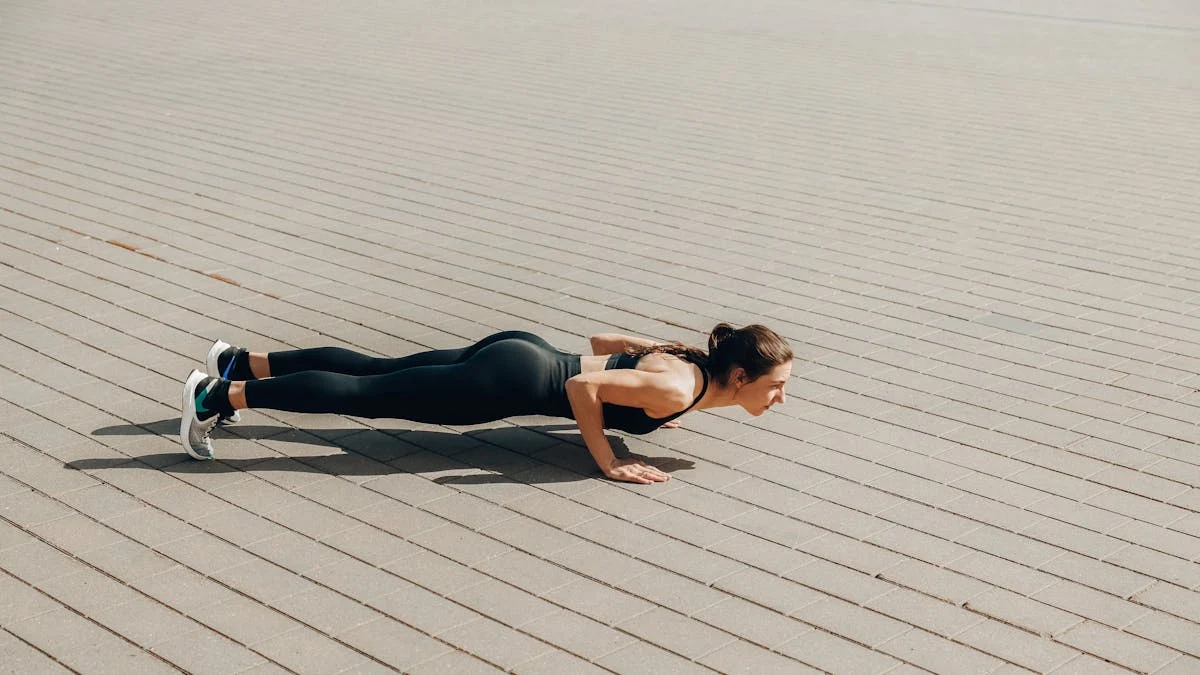
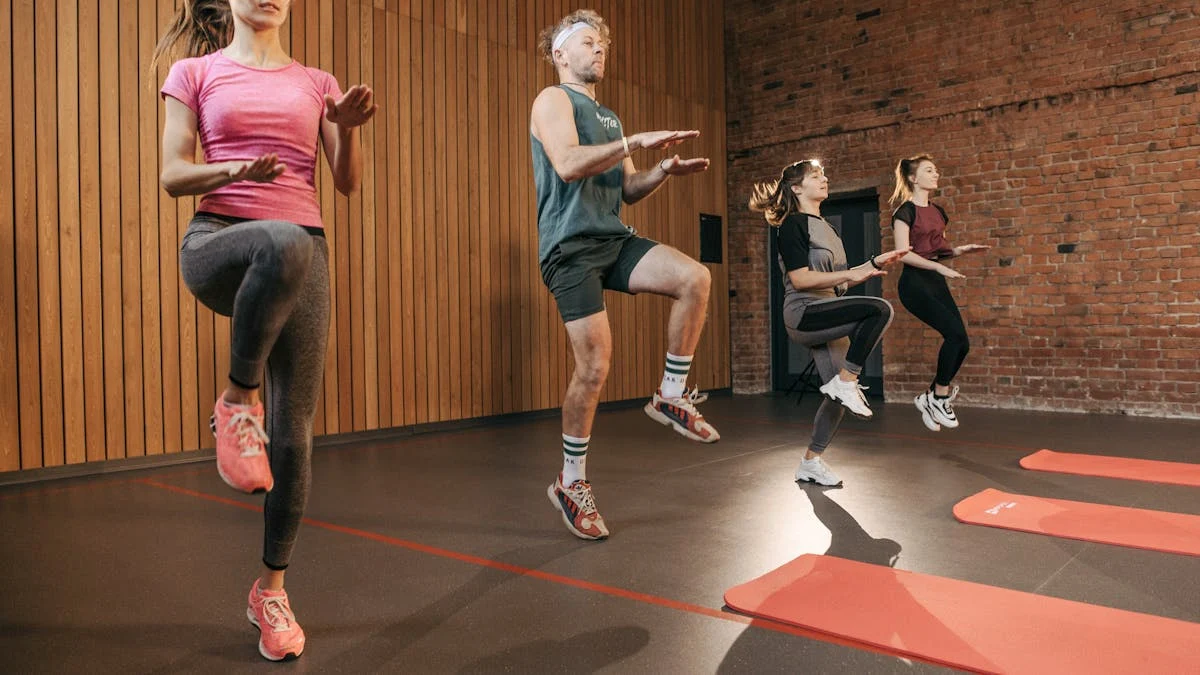
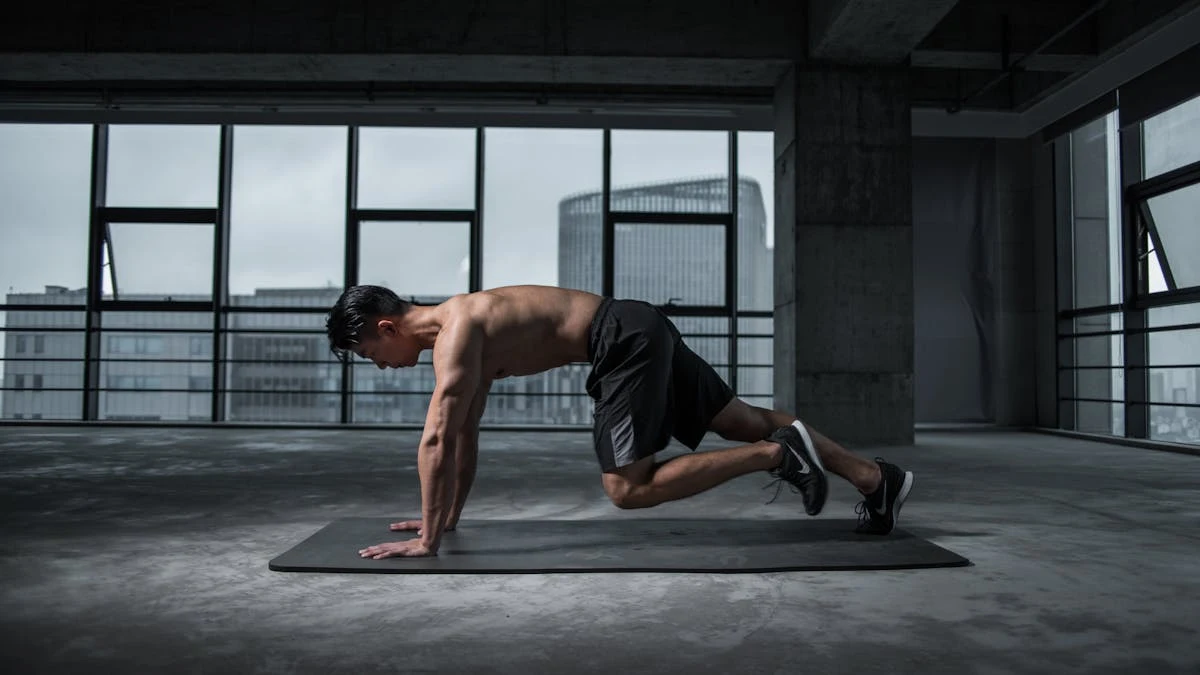
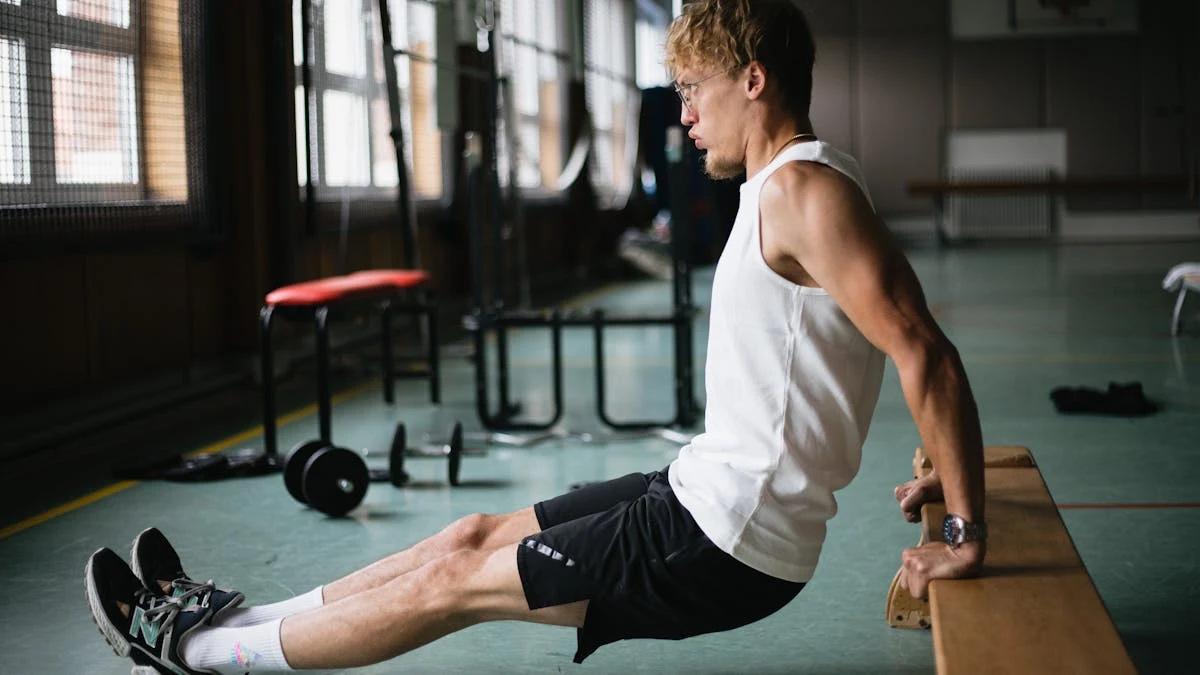
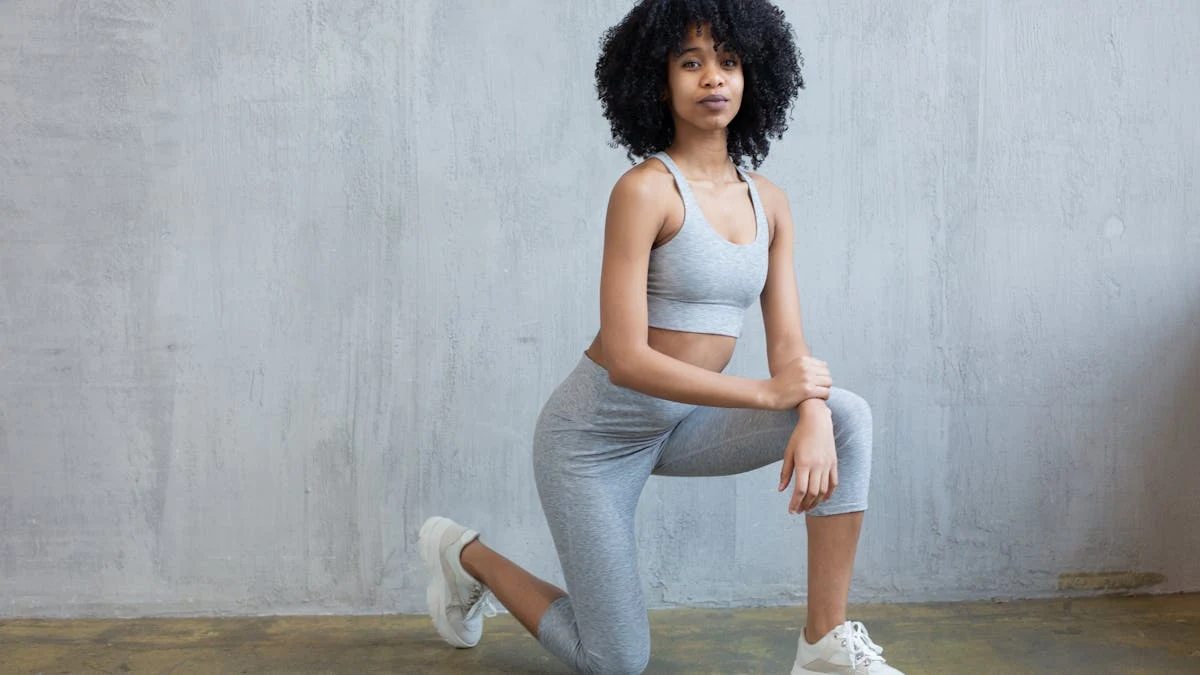
Comments
Post a Comment